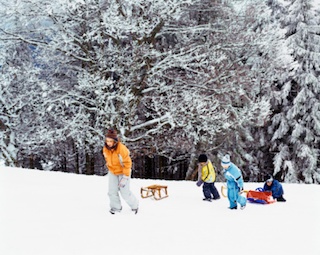 “Winter,” says the 2017 Farmers' Almanac, “is back.” More specifically, much of the country can expect “exceptionally cold, if not downright frigid weather,” with Ohio expected to experience “numbing cold.”
“Winter,” says the 2017 Farmers' Almanac, “is back.” More specifically, much of the country can expect “exceptionally cold, if not downright frigid weather,” with Ohio expected to experience “numbing cold.”
We recently blogged about preschoolers who don’t want to bundle up. So, before it gets too cold, consider this advice from that blog post: “Pick a temperature limit, factoring wind chill and the like. If the temperature is above your limit, let your child have more freedom in determining outerwear. If it drops below, the issue becomes non-negotiable. This system may help your child feel more in control while making sure he or she is bundled up when temperatures plunge.”
And, if Farmers’ Almanac is right, temperatures will truly plunge this winter. Since your preschooler will need to be outdoors at least part of the time, even if just to hurry to the car, it’s therefore important to know how to watch for signs of frostbite. Children are more susceptible for two reasons: First, they lose body heat more quickly, and two, they sometimes want to play outdoors beyond when it’s advisable.
Preventing and Caring for Frostbite in Young Children
Frostbite occurs when body tissue literally freezes. It often affects the skin only but can also reach deeper tissue — and it’s important to manage it properly to avoid any permanent damage.
KidsHealth.org offers plenty of tips, including educating yourself about expected weather trends. If there is a risk of extremely cold weather, even short bursts of exposure can lead to frostbite. To protect your child, layer him or her into warm clothing, including “hats, gloves, scarves, thick socks and well-insulated boots.” This ensures that the most susceptible areas will be covered. It’s best to choose inner layers that absorb moisture, with outer layers that are windproof and waterproof. When your child comes inside, immediately get him or her out of any wet clothing or footwear.
Caring For Kids chimes in with this advice: Mittens are better than gloves because fingers can bunch together for extra warmth. And, although layers of warmth is key, you must make sure they are safe for young ones. Remove drawstrings and cords so they don’t snag on playground equipment. Consider winter wear that uses Velcro, or snaps and zippers; neck warmers rather than scarves; and mitten clips rather than a string.
If your child complains that he or she is cold after coming back inside — especially on hands, feet or other easily exposed body parts — slowly warm up the area after removing the wet clothing and replacing it with dry. You can gently cover the troublesome area with your own hand or use warm water (never hot). If your child says a body part feels numb or is burning, or it appears white or waxy, get medical assistance quickly.
Stanford Children’s Health points out that treatment for frostbite varies by its severity. In any instance, reassure your child that you are getting help. If he or she has sore feet, don’t permit him or her to walk. Carry your child. As you’re waiting for medical assistance, cover your child with a blanket and provide a warm drink. You’ll be tempted to soothe him or her by rubbing affected skin, but don’t. If fingers or toes are affected, put clean gauze between them, but be careful not to disturb blisters. You can also wrap already-warmed areas of the skin to protect them.
Prevention, of course, is definitely the best medicine — but it’s also good to be prepared for any actual instances during our cold Ohio winters.
Looking for more ways to enrich your child’s learning and life? Horizon Education Center provides affordable quality care, including educational and enrichment opportunities for children in the following Northeast Ohio locations.






